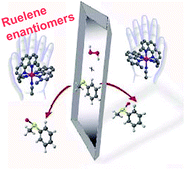SPME-enantioselective gas chromatography with ECD and ICP-MS detection for the chiral speciation of the pesticide ruelene in environmental samples†
Abstract
Most chiral

* Corresponding authors
a
Department of Physical and Analytical Chemistry, University of Oviedo, C/Julian Clavería 8, Oviedo, Spain
E-mail:
asm@correo.uniovi.es
Fax: +34-98-5103125
Tel: +34-98-5103474
Most chiral

 Please wait while we load your content...
Something went wrong. Try again?
Please wait while we load your content...
Something went wrong. Try again?
N. Fidalgo-Used, M. Montes-Bayón, E. Blanco-González and A. Sanz-Medel, J. Anal. At. Spectrom., 2006, 21, 876 DOI: 10.1039/B603509D
To request permission to reproduce material from this article, please go to the Copyright Clearance Center request page.
If you are an author contributing to an RSC publication, you do not need to request permission provided correct acknowledgement is given.
If you are the author of this article, you do not need to request permission to reproduce figures and diagrams provided correct acknowledgement is given. If you want to reproduce the whole article in a third-party publication (excluding your thesis/dissertation for which permission is not required) please go to the Copyright Clearance Center request page.
Read more about how to correctly acknowledge RSC content.
 Fetching data from CrossRef.
Fetching data from CrossRef.
This may take some time to load.
Loading related content
